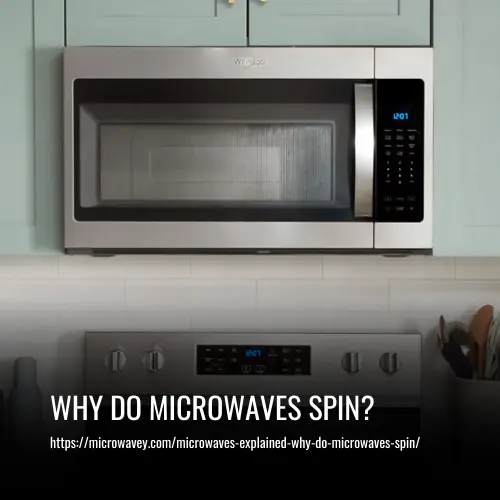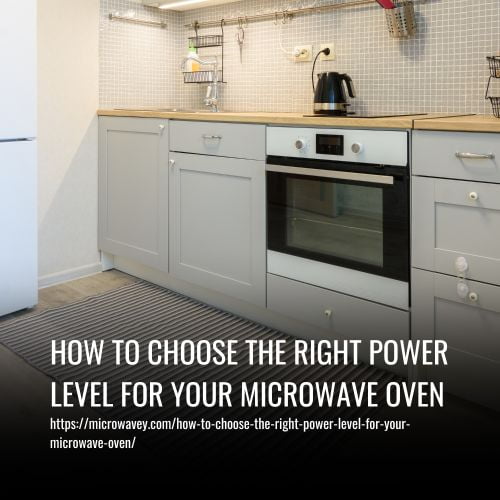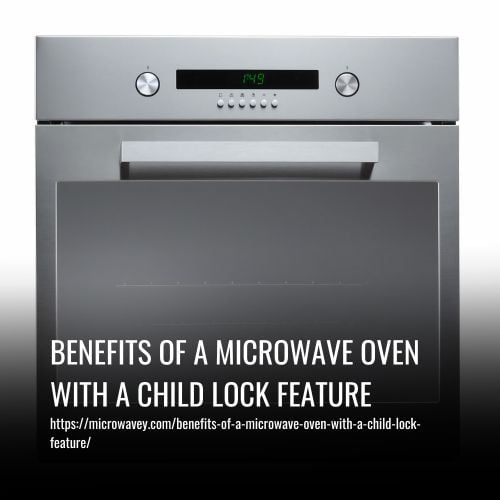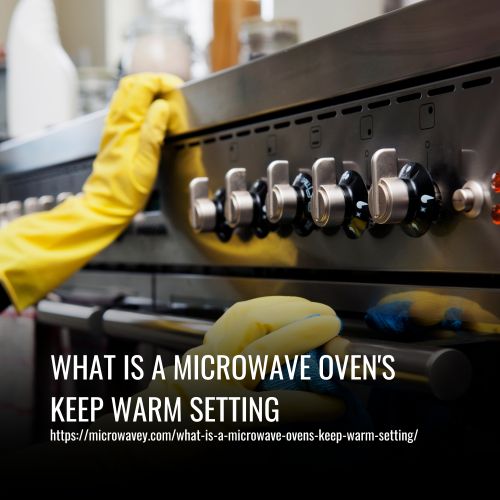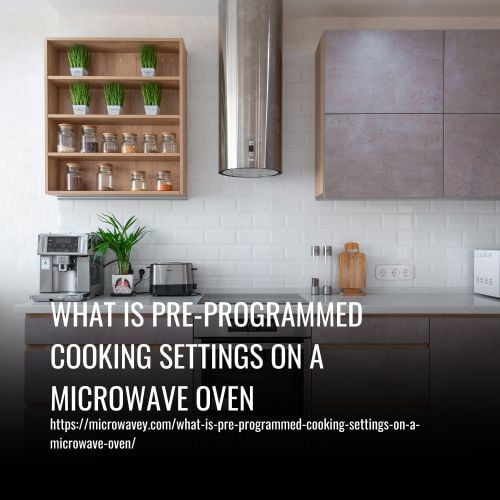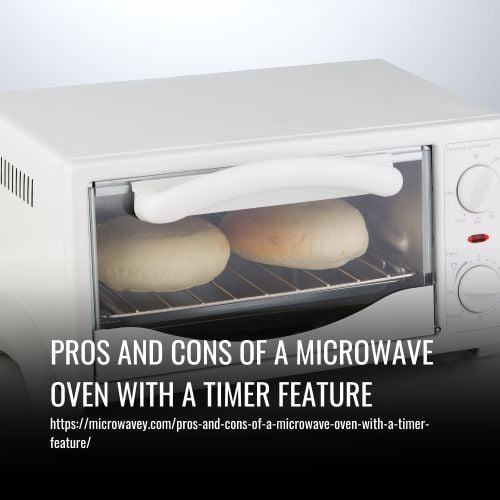Best Defrost Settings For Your Microwave Oven
When using a defrost setting, there are two main things to consider: time and power level. You should adjust both depending on how thick the food item is, so if you’re working with thick cuts of meat then you’ll want more time and less power than if you were just thawing ground beef for instance.
With this in mind, let’s explore the various types of defrost settings available in today’s modern microwaves and figure out which one works best for each situation!

Understanding Defrost Settings
When it comes to defrosting your food with a microwave, there are few key things you should know in order to ensure the best results.
Firstly, understanding exactly how long you need to set aside for each type of food is essential; different timeframes will depend on the size and weight of what you’re thawing. This ensures that your food doesn’t get cooked instead of defrosted!
Secondly, while some types of food may require reheating after they have been defrosted – such as bread or pizza – make sure to check the instructions included with whatever it is that you choose to defrost.
To avoid over-cooking any items, always use low power settings and keep an eye on your cooking times when reheating.
With these tips in mind, you can rest assured that you’re getting optimal results from your microwave oven’s defrost setting every single time!
Defrost Setting For Fish
When it comes to defrosting fish, there are a few different methods you can use. I recommend the defrost setting on your microwave oven, as it’s a great way to quickly thaw frozen fish. When you choose the defrost setting, make sure you set the temperature to the lowest setting and keep an eye on the timer to ensure you don’t thaw your fish for too long. With the right temperature and timing, you can have perfectly defrosted fish in no time!
Defrost Methods
It’s always a challenge to defrost fish properly in the microwave!
If you want to do it quickly and safely, timing techniques are essential.
I recommend using 30-second intervals and regularly checking your fish with a fork.
Doing this can help prevent overcooking and potential safety concerns such as food poisoning or salmonella contamination.
Plus, it ensures that your meal is cooked evenly throughout so you can enjoy every bite without worry!
Thawing Time
Once you’ve set the defrost setting on your microwave for thawing fish, it’s important to pay attention to how long you leave it in there.
You don’t want to rush and risk contamination or overcooking – but at the same time, if you’re short on time then speed optimization is key!
To ensure maximum safety while still optimizing speed, I recommend starting with two minutes of defrost time, then checking every 30-seconds thereafter until the desired texture has been achieved.
This will help ensure both food safety and optimal taste – so you can enjoy your meal without worry!
Best Temperature Setting
Now that you know the optimal defrost time for fish, let’s talk about choosing the right temperature setting.
Generally speaking, it’s best to use a lower power level when thawing your fish. This will give you more control over the process and reduce the risk of overcooking or contamination.
I recommend starting with a power level between 10-30% and increasing as needed if there are still frozen parts after two minutes of defrost time.
With this method, you can avoid any unwanted surprises while ensuring food safety and delicious results!
Defrost Setting For Poultry
Defrosting poultry in the microwave is an art form. It requires patience and precision to ensure a delicious, safe meal every time.
To master it, you need to understand how to defrost settings work and what they can do for your food.
The key to successful defrosting lies in finding the right balance between temperature and time. Too much heat will cause proteins to denature, while too little heat won’t thaw the food at all.
The ideal setting should be just enough to start melting ice crystals without actually cooking any part of the poultry. For most microwaves, this means selecting a low-power setting and allowing plenty of time for even thawing- around 30 minutes per pound or more depending on size and cut.
This allows for safe thawing that preserves flavor and texture with minimal risk of spoilage or contamination.
Defrost Setting For Red Meat
When it comes to defrosting red meat in the microwave, there are some important safety guidelines and reheating tips that you should keep in mind. For starters, always ensure that your red meat is properly thawed before heating or eating. This can be done by either leaving the meat on a counter for several hours at room temperature or placing it in cold water for about an hour.
In terms of setting the correct defrost settings for your microwave oven, here are three helpful tips to remember:
- Set your microwave power level between 30-50% to prevent overcooking the outer edges while ensuring thorough interior cooking.
- Allow 2 minutes of rest time between each interval of defrosting and adjust these intervals as needed depending on how much food needs to be cooked.
- If necessary, use a thermometer when checking whether red meat has been thoroughly cooked through.
Following these simple guidelines will help ensure that you get perfectly cooked red meat every single time!
Defrost Setting For Rice And Grains
When it comes to defrosting rice and grains, I recommend using a low power setting of around 30-50%. This will help ensure that the texture remains intact. You want to make sure that your food isn’t overcooked or dry.
To go one step further, you can also use the auto defrost setting for these types of foods since it adjusts the time and power settings based on the weight of your food.
Keep in mind that if you are defrosting frozen grains such as couscous, quinoa or farro, they will not need much cook time at all when being reheated in the microwave. For best results try starting with 2 minutes then check every 20 seconds until desired texture is achieved.
By following these tips you should be able to get perfect cooked rice and grain textures every time!
Defrost Setting For Frozen Vegetables
When it comes to defrosting frozen vegetables in the microwave oven, the defrosting times and the use of manual or automatic settings can make all the difference. I always recommend using the manual settings, as they give you more control over the process and help you get the best results!
Defrosting Times
When it comes to defrosting frozen vegetables, you need to be careful and use the right techniques. Make sure not to cover any containers with metal when using the defrost setting too; this could cause sparks which would be dangerous and potentially damage your appliance.
Keep these tips in mind and you’ll have perfectly cooked veggies every time – no more soggy or tasteless meals.
Manual Vs Automatic
But even after you’ve mastered the art of defrosting veggies in your microwave, there’s still one more decision to make – should you use the manual or automatic setting?
Manual settings allow you to control exactly how long and at what power level your food is being cooked. On the other hand, most microwaves come with an auto-defrost setting which takes all the guesswork out of it.
It comes down to personal preference, but either way be sure that you’re aware of the safety guidelines when using either option; always keep a close eye on whatever is cooking in your oven and never leave it unattended!
Defrost Setting For Frozen Fruits
Defrosting frozen fruits can be slightly trickier than defrosting vegetables, but no need to worry. With the right settings and a few helpful tips, you’ll find that you can easily thaw out your favorite fruit in minutes.
Now while some people might think it’s better to just let the fruit sit on the countertop overnight, microwaving is still an excellent option if done correctly! Here are some quick defrosting tips for getting delicious, juicy fruit:
- For best results, use microwave speed defrosting mode or select “defrost by weight” according to the instructions of your particular oven model.
- Make sure to check on the progress periodically as over-defrosted items will become too soft and mushy.
- Always break apart any large chunks before continuing with the cycle. This ensures even heating throughout all parts of the item being defrosted.
- Place a paper towel beneath frozen food items to absorb excess liquid from dripping during the defrosting process.
So go ahead and try these easy defrosting methods next time you want to enjoy fresh fruit without having to wait hours first!
Defrost Setting For Frozen Breads
| Bread Type | Power Level | Time (min) |
|---|---|---|
| White Bread | 50% | 2 – 3 |
| Whole Wheat | 30%-50% | 4 – 6 |
| Focaccia | 40%-60% | 5 – 7 |
| Sourdough | 40%-60% | 8 – 10 |
As you can see from the table above, white bread requires higher power levels for shorter times, while heavier sourdough needs lower power levels but more time. If you’re unsure which setting is best for your particular type of bread or any additional ingredients that have been added into the mix, start out with an average setting and adjust as needed based on how well your food is thawing out. With practice, you’ll be able to determine exactly what works best for each kind of loaf!
Defrost Setting For Frozen Desserts
When it comes to defrosting frozen desserts, the best way is to use your microwave oven’s defrost setting.
The key with this type of food is to ensure that you don’t over-defrost and end up with a soggy mess.
Depending on how much you want to thaw, adjust the defrost times accordingly.
When in doubt, start small and increase as needed until desired texture is achieved.
Some helpful tips for successful thawing include making sure the dessert is placed in an even layer inside the microwave so heat can be distributed evenly throughout the item.
Additionally, avoid crowding other items into the same space while defrosting as this will disrupt proper heating and could cause unevenness or burning.
With these easy steps and tips, you’ll have perfectly thawed treats every time!
Defrost Setting For Pre-Cooked Foods
When defrosting pre-cooked foods using your microwave oven, it is important to follow a few key tips. Here are five essential defrost settings that will ensure you get the best results:
- Start by setting the power level on low. This prevents food from cooking while thawing and allows for more even heating throughout.
- Use shorter intervals when checking the progress of the food – this can help prevent overcooking or burning any areas that may have been missed during initial checks.
- Make sure to stir or turn over larger chunks of meat such as chicken breasts so that all sides are exposed equally to the heat.
- For safety reasons, always cook frozen food immediately after defrosting – do not refreeze!
- And lastly, never use metal containers in the microwave; opt for plastic or glass dishes instead.
By following these simple rules, you’ll be able to successfully master various types of pre-cooked foods with ease — all while keeping yourself safe and sound in the kitchen!
FAQs
When it comes to defrosting food in a microwave oven, safety is of the utmost importance. I always recommend taking extra precautions to ensure your food is properly thawed and cooked before consumption.
To do this safely, start by setting your microwave to its lowest power level and avoid using high heat levels when defrosting. This will help prevent uneven cooking or over-cooking parts of the food that are already thawed while other areas remain frozen.
Additionally, be sure you turn the food periodically during defrosting so all sections have time to evenly warm up.
Lastly, once fully defrosted, cook immediately afterward as microwaves can quickly re-freeze partially thawed foods which can lead to bacteria growth if not handled correctly.
Defrosting food in the microwave without a defrost setting is like trying to climb a mountain without any climbing gear; it may be possible, but it’s going to take longer and will likely not yield the best result.
Using the defrost setting on your microwave oven allows you to quickly adjust power levels and cooking times for optimal thawing. By leveraging different levels of microwave power, you can ensure that food items are properly defrosted while still preserving texture and flavor.
When it comes to defrosting food in a microwave oven, there are certain foods that you should avoid.
For example, cooked meat or fish dishes can be reheated safely but not defrosted using this method due to the risk of bacteria being present when the dish is still cold on the inside.
Also, large hunks of frozen food like roasts and whole turkeys may require cooking times too long for safe use in a microwave oven at any power level.
If you do decide to try defrosting these types of items in your microwave, be sure to monitor them closely as they cook – and adjust both the time and power levels accordingly.
Refreezing food that has been defrosted in the microwave is a common cooking question. According to statistics, almost 50% of households have microwaves and use them regularly for defrosting raw meat or other frozen products.
As an expert on microwave ovens, I can tell you it’s not safe to refreeze food that’s already been thawed in a microwave – no matter how long the cooking times are!
The safest way to thaw foods like raw meat is overnight in your refrigerator, as this allows a slow and even thawing process without increasing bacteria levels.
Yes, you can use the same defrost setting for different types of food.
It’s important to consider meal planning and portion sizing when deciding on your best defrost settings.
As a microwave oven expert, I recommend that you adjust your power level depending on what type of food needs to be defrosted – like vegetables, poultry or steak.
This will ensure that your meals are cooked properly and evenly without any areas that remain frozen solid.
Conclusion
The microwave oven is a fast and convenient way to defrost food. However, there are some important considerations when using this appliance. It’s essential to use the correct settings to ensure that your food is thawed in a safe and healthy manner.
For instance, if you want to defrost something like chicken wings or hamburger patties, it can be tempting to just throw them in the microwave with no setting at all. This will result in unevenly cooked portions of meat – not ideal!
Instead, opt for the ‘defrost’ setting on your microwave; this will allow your food to slowly heat up while keeping it from cooking too quickly. In addition, different types of foods require different levels of power and time when using the defrost mode.
For example, larger cuts of meat such as steak should be set at 30% power for around 5 minutes per 500g; whereas smaller items such as frozen vegetables may only need 15-20 seconds on full power. Understanding these differences will help you achieve optimal results every time you defrost in the microwave oven.
Finally, once you have successfully defrosted food in the microwave oven, remember never to refreeze it – doing so could potentially cause bacterial contamination which could make you ill. By taking into account these key points and following our expert advice above, you’ll be able to safely enjoy perfectly cooked meals without fear of bacteria or unevenly heated portions!

